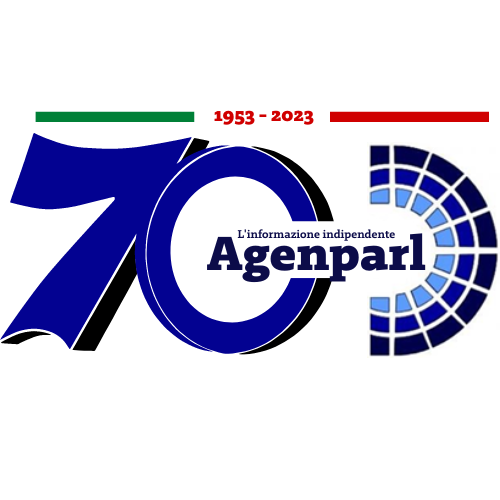 (AGENPARL) - Roma, 28 Giugno 2024
(AGENPARL) - Roma, 28 Giugno 2024(AGENPARL) – ven 28 giugno 2024 A weekly compendium of media reports on science and technology achievements
at Lawrence Livermore National Laboratory. Though the Laboratory reviews
items for overall accuracy, the reporting organizations are responsible for
the content in the links below.
….. LLNL Report, June 28, 2024
Researchers at LLNL’s National Ignition Facility for the fourth time have
achieved a net energy gain from a nuclear fusion reaction.
… Show me the money
https://www.thechemicalengineer.com/news/governments-urged-to-do-more-as-ambitious-timeline-for-fusion-set-at-fusion24-conference/
Fusion has garnered something of a reputation in the energy industry for
always being 30 years away. However, scientists and engineers from around the
world gathered at The Science Museum in London recently to listen to the
ambitious plans to get “fusion electrons on the grid by the 2030s.”
The UK Atomic Energy Authority’s (UKAEA) FUSION24 showcased the goals and
vision of the international fusion community, highlighting recent
advancements, including the Lawrence Livermore National Laboratory’s (LLNL)
fourth net energy gain from a nuclear fusion reaction.
Tammy Ma, the lead for the Inertial Fusion Energy Initiative at LLNL, said
making the giant leap to commercial scale for the Lab’s National Ignition
Facility (NIF) and those like it would only be possible with increased levels
of investment.
“For NIF, we are trying to push up to much higher gains in the next couple
years, but it is science so I cannot give a prediction on when that will
happen,” she said. “In terms of building a full-scale power plant, it
depends on overall investment, and it will take partnership between the
public and private sector. It is crude, but progress is measured by the
amount of money that goes into the system.”
Read More
https://www.thechemicalengineer.com/news/governments-urged-to-do-more-as-ambitious-timeline-for-fusion-set-at-fusion24-conference/
A LLNL scientist is working on a technique to slingshot a spacecraft around
the sun to increase its speed. (Image: NASA)
… That’s hot stuff
https://phys.org/news/2024-06-slingshotting-sun-spacecraft-fastest.html
Slingshotting around the sun would make a spacecraft travel faster than ever.
There are several different ideas to support that goal, and most of the more
successful have used the sun’s gravity well, typically by slingshotting
around it, as is commonly done with Jupiter.
But, there are still significant hurdles when doing so, not the least of
which is the energy radiating from the sun simply vaporizing anything that
gets close enough to utilize a gravity assist. That’s the problem a project
supported by NASA’s Institute for Advanced Concepts (NIAC) and run by Jason
Benkoski, now of Lawrence Livermore National Laboratory, is trying to solve.
The solution involved combining two separate systems — a heat shield and a
thermal propellant system. According to the project’s final report,
combining those two technologies could allow a spacecraft to perform what is
known as an Oberth maneuver around the sun.
Benkoski and his team developed a material that is capable of withstanding up
to 2700 degrees Kelvin. While that is still not anywhere near the temperature
of the sun’s surface, which can reach up to 5800 K, its enough to get
pretty close, and thereby unlock a spacecraft’s ability to use an Oberth
maneuver (a powered flyby) in the first place.
Read More
https://phys.org/news/2024-06-slingshotting-sun-spacecraft-fastest.html
Artist’s rendering of a black hole emitting a jet of hot gas known as
plasma. An international team of scientists, including Rochester researchers,
has generated plasma “fireballs” experimentally, opening a new frontier
in laboratory astrophysics. (Image: NASA/JPL-Caltech)
… Bursting with excitement
https://www.azoquantum.com/News.aspx?newsID=10325
A new lab experiment has recreated the conditions of gamma-ray bursts. An
international team of scientists, including researchers from Lawrence
Livermore, have generated high-density relativistic electron-positron
pair-plasma beams (similar to those found in gamma-ray bursts) by creating
two to three orders of magnitude more pairs than previously reported. **
Two of the universe’s densest known objects are black holes and neutron
stars. Alongside solids, liquids and gases, plasmas are the fourth
fundamental state of matter, which exists within and around these extreme
astrophysical environments.
Plasmas at these extreme conditions are called relativistic electron-position
pair plasmas because they consist of a mixture of electrons and positrons
traveling at almost the speed of light. Although these plasmas are common in
deep-space environments, creating them in a lab setting has
proven difficult.
Read More https://www.azoquantum.com/News.aspx?newsID=10325
This image depicts a surface representation of the interaction among the
cancer drug candidate, BBO-8520 (yellow), the natural substrate guanosine
triphosphate (or GTP, orange) and a KRAS protein (cyan). (Image: LLNL team)**
… From simulation to clinical trials
https://www.independentnews.com/health/supercomputer-developed-cancer-drug-is-first-to-begin-clinical-trials/article_869aca92-2ea3-11ef-826a-cb36203f1dff.html
Three supercomputers from the Lawrence Livermore National Laboratory (LLNL)
were instrumental in developing a novel cancer treatment that will go into
clinical trials this month.
The FDA approved the drug in December 2023, which will now be used to treat
non-small-cell lung cancer. LLNL teamed up with BridgeBio and the Frederick
National Laboratory for Cancer Research (FNL) to develop BBO-8520, a
small-molecule cancer drug that targets KRAS mutations, which are protein
errors involved in many cancers that were previously considered
“undruggable.”
This drug is known as “first-in-class,” which means no other drug targets
the specific binding site and protein in the cancers that the team is
studying. KRAS genes are a subset of the RAS gene family, which cancer
researchers have been studying for decades. RAS genes mainly encode proteins
central to cell signaling. Mutations of these genes are implicated in 30% of
cancers, including pancreatic, lung and colorectal cancer.
Felice Lightstone, the principal investigator of this project at LLNL, said
the project wouldn’t have been possible without high-performance computing.
LLNL supercomputers Ruby, Quartz and Lassen significantly lowered the cost
and shortened the timeline of drug development. Later this year, LLNL will
have another three supercomputer systems — El Capitan, RZAdams and Tuolumne
— added to their roster, bringing their total number of Top500
supercomputers to 14.
Read More
https://www.independentnews.com/health/supercomputer-developed-cancer-drug-is-first-to-begin-clinical-trials/article_869aca92-2ea3-11ef-826a-cb36203f1dff.html
Composite image of the Andromeda galaxy created from images from the
GEOStare2 mission that used a Lawrence Livermore monolith telescope payload
on a Terran Orbital smallsat.(Image: LLNL)
… Pay up in space
Livermore Lab to provide optical payload for U.S. Space Force mission
A space imaging payload developed by Lawrence Livermore National Laboratory
was selected for a U.S. Space Force mission intended to test military
capabilities to rapidly deploy satellites in response to threats in orbit.
The planned mission, known as Victus Haze, is projected to launch in 2025.
Two spacecraft — one from Rocket Lab and another from True Anomaly — will
perform maneuvers in close proximity. The Livermore payload will be
integrated in Rocket Lab’s vehicle.
Victus Haze is a “tactically responsive” mission that requires
contractors to be ready to launch on short notice, and the Space Force
expects the satellites to be operational within hours after launch.
Ben Bahney, head of Lawrence Livermore’s space science and security
program, said the Lab will provide a monolithic telescope built from a single
piece of fused silica, “eliminating the need for alignment and calibration
after manufacture while still providing the best possible resolution.”
Read More
Livermore Lab to provide optical payload for U.S. Space Force mission
… LLNL Report takes a break https://www.llnl.gov/news/lab-report
The /LLNL Report/ will take a break for the Fourth of July holiday. It will
return July 12, 2024.
Read More https://www.llnl.gov/news/lab-report
——————————————————————————
Founded in 1952, Lawrence Livermore National Laboratory https://www.llnl..gov
provides solutions to our nation’s most important national security
challenges through innovative science, engineering and technology. Lawrence
Livermore National Laboratory is managed by Lawrence Livermore National
Security, LLC for the U.S. Department of Energy’s National Nuclear Security
Administration.
Read previous Lab Report articles online https://www.llnl.gov/news/lab-report
— Unsubscribe from this newsletter :
